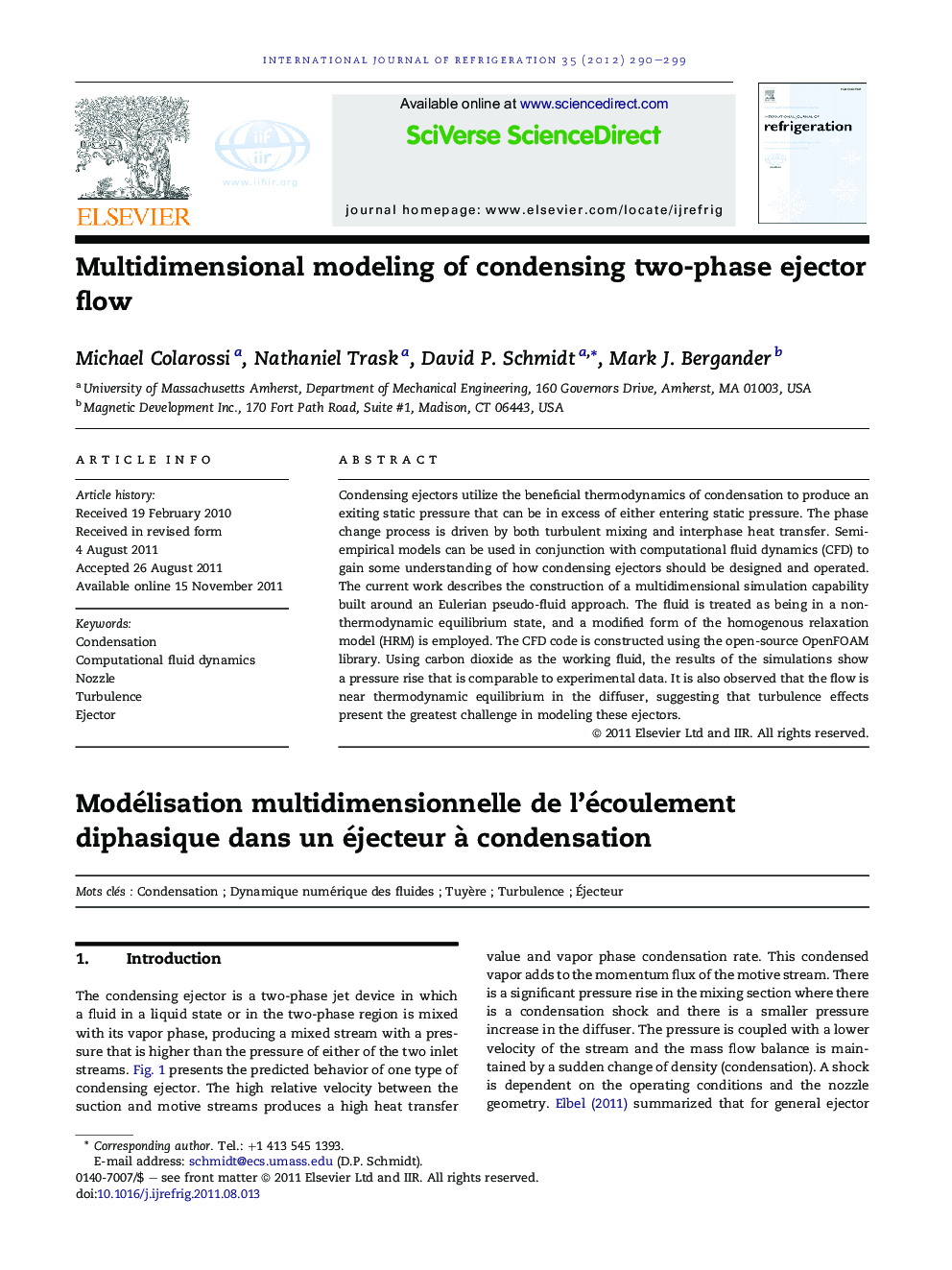| Article ID | Journal | Published Year | Pages | File Type |
|---|---|---|---|---|
| 787155 | International Journal of Refrigeration | 2012 | 10 Pages |
Condensing ejectors utilize the beneficial thermodynamics of condensation to produce an exiting static pressure that can be in excess of either entering static pressure. The phase change process is driven by both turbulent mixing and interphase heat transfer. Semi-empirical models can be used in conjunction with computational fluid dynamics (CFD) to gain some understanding of how condensing ejectors should be designed and operated. The current work describes the construction of a multidimensional simulation capability built around an Eulerian pseudo-fluid approach. The fluid is treated as being in a non-thermodynamic equilibrium state, and a modified form of the homogenous relaxation model (HRM) is employed. The CFD code is constructed using the open-source OpenFOAM library. Using carbon dioxide as the working fluid, the results of the simulations show a pressure rise that is comparable to experimental data. It is also observed that the flow is near thermodynamic equilibrium in the diffuser, suggesting that turbulence effects present the greatest challenge in modeling these ejectors.
► Computational Fluid Dynamics is used to model two-phase flow of carbon dioxide in an ejector. ► A homogeneous relaxation model is used to accommodate fluid that is not in thermodynamic equilibrium. ► Pressure recovery is predicted and compared to experimental results. ► CFD results match trends seen in experimental work.
